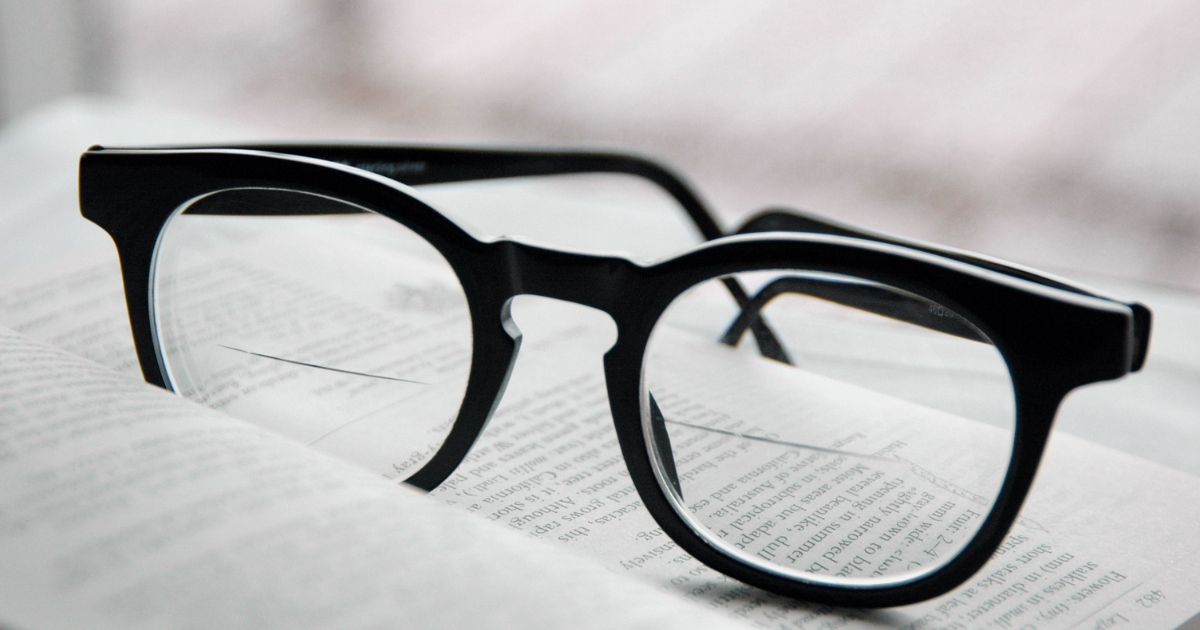Are you at the age where everything on your phone looks blurry, and it feels like your arms just aren’t long enough to help you read the text? Do you struggle to read menus at restaurants or glance at your phone only to realize it’s become a mystery blur? If so, you’re not alone. Like many, I’ve experienced this frustrating phenomenon, and I’m here to share what I’ve learned about it—presbyopia—and how you can manage it effectively.
Presbyopia is a fancy word that simply means the inability to see things up close as clearly as you used to. It’s not an unusual occurrence; in fact, it’s a natural part of aging that most of us encounter at some point. For many, it sneaks up around the age of 45. For others, it might start as early as 40 or as late as 50. From my experience in the clinic, 45 seems to be the magic number when most people start coming in with the same complaint: “I just can’t see anymore. Something’s wrong with my eyes.” They’ll insist they’re going blind, but that’s not the case. These individuals can still see clearly at a distance, either with their existing glasses or without glasses altogether. The problem arises when they try to focus on something nearby, like their phone or a book, and the words seem to melt together into a blur.
So, what’s happening? The culprit is the lens in our eyes. As we age, this lens becomes less flexible, making it harder to focus on objects up close. When we’re young, the lens is soft and pliable, allowing us to effortlessly adjust focus between near and far objects. But as the years pass, it stiffens, and we lose that ability. While the realization can be disheartening, the good news is there are simple and effective solutions.
Let’s start with the easiest option. If you’ve never needed prescription glasses, you can use magnifiers or reading glasses. These are affordable, readily available, and come in a variety of strengths. Personally, I use magnifiers with a power of +1.50. You can find these at dollar stores, pharmacies, or online retailers like Amazon. They’re incredibly inexpensive; in fact, you can often pick up a pair for just a few dollars. Readers are labeled with numbers indicating their power, ranging from +1.00 to +3.00 or higher. If you’re unsure which power to start with, here’s a simple guide: at age 45, try +1.00. Every five years, increase by +0.50. For example, at age 50, you’ll likely need +1.50, at 55, +2.00, and so on. By 65, most people benefit from a +3.00 lens. It’s that straightforward.
If you already wear prescription glasses, things can get a bit more complicated, but the solutions are just as effective. In this case, you’ll need a “reading add” added to your prescription. This is an additional corrective power specifically for near vision. You have several options for lenses: bifocals, trifocals, or progressives. Each has its pros and cons. Bifocals, for instance, have a visible line separating the distance prescription from the near prescription. Many of my patients prefer bifocals because they make it easy to find the correct spot for reading.
Progressive lenses, on the other hand, don’t have a visible line, making them more aesthetically pleasing. Instead, they offer a gradual transition between distance and near vision. While this sounds great in theory, it can take some getting used to. When I first tried progressives, I felt dizzy and disoriented for the first couple of weeks, especially when walking up or down stairs. The visual distortion can be off-putting at first, but with time, your brain learns to adapt, and the lenses become second nature.
For those considering progressives, I recommend upgrading to premium lenses. These offer a wider field of view and less visual distortion. I ordered mine from Zenni Optical, an affordable online retailer, for about $75. While the initial adjustment period was challenging, once I got the hang of it, I found them to be an excellent investment. The key is to ask your optometrist or ophthalmologist to prescribe a reading add that’s slightly stronger—about +0.25 more than usual. This small adjustment makes a big difference, especially when reading text near the bottom of the lens.
Another handy tool I’ve found is a prismatic magnifier. These are incredibly thin, about the size of a credit card, and easy to carry in your wallet or purse. They’re perfect for reading menus, price tags, or any small print when you’re on the go. I picked one up from Aviation Survival Equipment, and it’s been a game-changer. You’d be surprised how often it comes in handy.
There are contact lens options like monovision where the dominant eye is set for distance and the non-dominant eye is set for near reading. Surgical lens exchange with premium intraocular lenses may be an option for you. You can discuss these options with your optometrist and ophthalmologist.
In conclusion, presbyopia is a natural part of life, but it doesn’t have to slow you down. Whether you choose magnifiers, prescription lenses, progressives, or surgery, there are solutions for every lifestyle and budget. If you haven’t already, I encourage you to explore your options and find what works best for you. And remember, it’s okay to carry a magnifier or a pair of readers—you’re in good company. Don’t forget to subscribe to my updates for more tips and advice. Here’s to clear vision and a bright future—no matter what age you are!
Affordable Prescription Glasses at Zenni Optical: https://tinyurl.com/getzenni


Leave a Reply